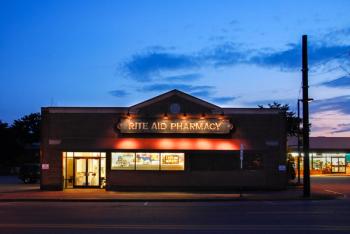
Should Gilead Offer Outcomes-Based Pricing for Sovaldi?
Pricing Sovaldi based on the predicted benefits of therapy in specific hepatitis C patient groups could ultimately lead to greater access for patients.
Although sofosbuvir (Sovaldi) has a higher cure rate than pegylated interferon and ribavirin therapy, sofosbuvir is a high-cost medication, with each tablet costing in excess of $1000.
Researchers Benjamin P. Linas, MD, MPH, and colleagues evaluated the cost-effectiveness of sofosbuvir-based treatments for hepatitis C virus (HCV) in patients with genotype 2 or 3 infection. Treatment in these genotypes does not require cotherapy with interferon in patients with genotype 2 or 3 infection.
Using a Monte Carlo simulation and several sensitivity analyses, researchers used data from randomized trials, observational cohorts, and other literature to identify the lifetime cost of treatment with sofosbuvir versus treatment with traditional interferon-based therapy.
The target population included treatment-naïve, as well as treatment-experienced patients, patients with and without cirrhosis, and patients with genotype 2 or 3 infection. Taken together, these three binary factors split all potential patients under consideration into eight possible groups.
Consistent with other cost-effectiveness research, investigators measured the discounted quality-adjusted life-years (QALY) and the incremental cost-effectiveness ratio (ICER) with sofosbuvir-based treatment versus traditional treatment. Although cost-effectiveness researchers used different valuations of a QALY, an ICER of $100,000 per QALY is considered by many researchers to be an acceptable threshold for cost-effectiveness.
Although all groups of patients with cirrhosis and treatment-experienced patients without cirrhosis met the $100,000 per QALY cost-effectiveness cutoff, for treatment-naive patients without cirrhosis, the cost of a QALY exceeded $200,000. As a result, six of eight possible groups of patients with genotype 2 and 3 infection met cost-effectiveness criteria for treatment with sofosbuvir over treatment with traditional injectable therapy.
A 40% reduction in the cost of sofosbuvir would be required for sofosbuvir to be cost-effective in treatment-naive noncirrhotic patients with genotype 2 HCV infection, and a 60% reduction in the cost of sofosbuvir would be required for sofosbuvir to be cost-effective in treatment-naive noncirrhotic patients with genotype 3 HCV infection. Currently, Medicaid only covers the cost of sofosbuvir for patients with advanced liver disease.
This research, which was funded by a grant from the National Institute on Drug Abuse and National Institute of Allergy and Infectious Diseases, points to a potential advantage to patient-specific pricing of sofosbuvir. With a standard one-price-fits-all model, all parties—patients, pharmaceutical companies, and payers—stand to lose something.
Patients miss the benefits of a more convenient and clinically superior treatment, pharmaceutical companies lose the potential profits associated with treating all patients, and payers lose credibility.
Recently, with the heart failure medication Entresto (sacubitril/valsartan), pharmaceutical giant Novartis has moved to an outcomes-based pricing model for the drug. Considering that patient characteristics and patient outcomes are often easier to characterize in HCV than in heart failure, Gilead could follow the lead of Novartis by pricing medications based on the potential benefits for specific patient groups. This approach could benefit all stakeholders—patients, payers, and pharmaceutical companies.
Reference
Linas BP, Barter DM, Morgan JP, et al. The cost-effectiveness of sofosbuvir-based regimens for treatment of hepatitis C virus genotype 2 or 3 infection. Ann Intern Med. 2015;162(9):1-12.
Newsletter
Stay informed on drug updates, treatment guidelines, and pharmacy practice trends—subscribe to Pharmacy Times for weekly clinical insights.




















































































































































































































